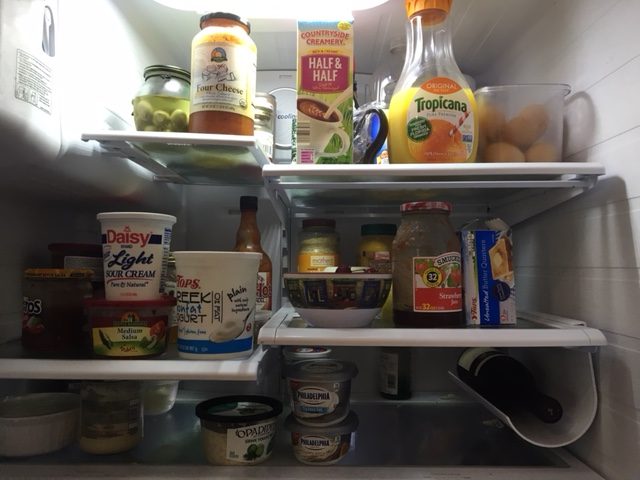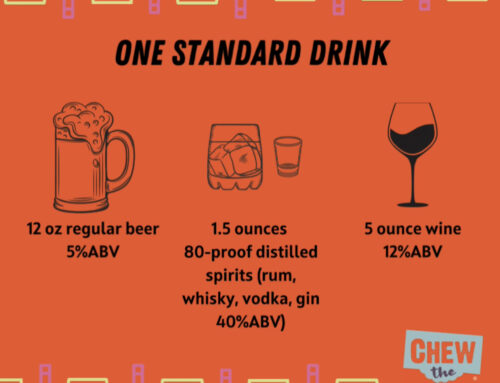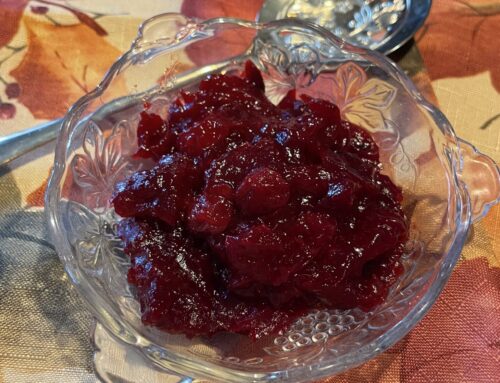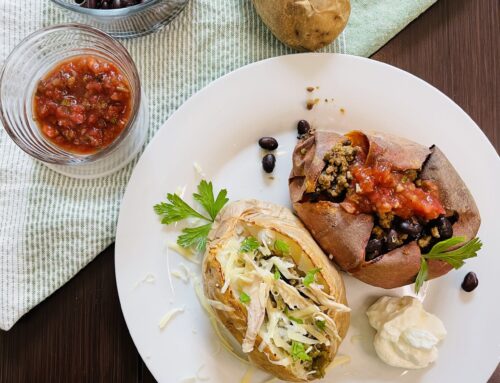I tend to have a standing grocery list. I buy foods my family enjoys, which includes what may be deemed “healthy” and also snacks that could be called “treats”, “junk”, or “occasional foods”. I buy “big” brands, store labels, fresh, organic, frozen and canned. It helps to have a standby list when I shop. Mine looks something like this:
- Bananas, spinach, mixed salad greens, berries (or other fruit on sale), grapes, apples, carrots, broccoli, asparagus
- Canned or jarred foods: beans, tomatoes, tuna, corn (my son loves canned corn), salsa
- Pasta: all varieties of imported pasta from Italy
- Rice: brown and white, sometimes instant, also other grains such as quinoa, farro, or barley
- Bread and cereal: sliced for peanut butter sandwiches, a hearty loaf for toasting, bagels, English muffins, breakfast cereals, quick oats, pizza shells
- Meat: fresh beef, chicken, pork, fish
- Frozen: waffles, vegetables, ice cream, sherbet, French bread pizza (kids love it when on their own), frozen shrimp or fish
- 1% milk, sometimes chocolate milk, half and half cream, yogurt (plain Greek and several flavored varieties), butter
- Snacks: potato and tortilla chips (we almost always have tortilla chips and salsa in the house)
That’s pretty much it. Of course I buy more than just these items, but these are the items that make it into the house regularly. We don’t have to buy eggs because we have four hens in the backyard that give us about 2-3 a day.
I make almost all of my choices based on taste, quality, and price.

Yep, this is a random day in my fridge.
Everyone has a different list. As a registered dietitian, I try to help people make better choices, but I don’t tell them which brands are “better”. Everyone values their dollars differently. What I may view as a waste of money, someone else may value as important. It’s not my place to judge them, but to help them understand what a healthy choice is, how they can work healthy choices they enjoy into their meal planning, and that some foods they may deem as “unhealthy” may indeed be just fine to incorporate into the diet. I do encourage more of what we may term as “whole” foods (nuts, seeds, fruits, vegetables, grains, eggs, fresh meats), but I wouldn’t want to do away with all convenience.
What you read on the front of the package is really not too useful.
The Nutrition Facts label gives you an idea about the nutrition a food provides, but still, that food or beverage is only one little part of your overall diet. The ingredient label may also be useful, especially in terms of food intolerance or allergy. But what you see on the front of package is often there to simply lure consumers into buying. Take these label claims for instance:
- Natural
- Organic
- Non GMO
- No high fructose corn syrup
These statements could be put on a number of different types of food, and the statement itself does absolutely nothing to guarantee you a healthy diet. You may hear or read messages every day in the media, such as “Avoid Big Food” or “Avoid GMOs” or “Conventional farming is bad for the environment” or “Soda is what’s making everyone fat” or “5 foods a dietitian would never eat”.
Always read past the headlines.
Statements like those are simply rubbish. Click bate. Most choices are made based on misunderstood guidelines or advice – for instance some consumer surveys have shown that over 70% of consumers choose foods labeled as “natural” even though that term has no meaningful definition, or benefit.
My advice: Meet with a registered dietitian to get specific answers about the foods you put in your cart.





My grocery list looks very similar to yours :). The silly marketing labels are quite deceptive and misleading. I usually get a good laugh at where I have found some of these labels when I go to the grocery store. Great post!
Thanks Kim! Agree, they really can be deceptive creating a false superiority over other foods (that are often less expensive).